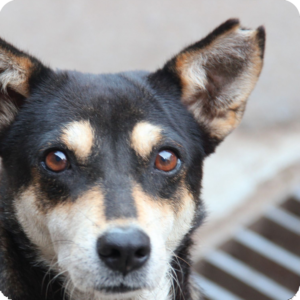Animal Birth Control -Anti Rabies Vaccination for Humane Stray Dog Management
The most effective solution for all stray dog issues
Garbage attracts and breeds stray animals across India and stray dog issues cannot be resolved until communities take up garbage disposal very responsibly. The temporary solution of killing dogs does not help, because new dogs will appear, migrating to feed on the garbage available. These dogs could breed, bite and carry rabies into the community.
One breeding pair of stray dogs can give raise to 2,000 in their lifetime. Neutering and vaccinating them is a sensible and scientific solution.
Animal Birth Control and Anti Rabies Vaccinations (ABC/ARV) for Stray Dogs is a programme supported by Animal Welfare Board of India through Government of India, Stray Dog Control Rules 2001.
The Rules mandates Civic bodies to conduct Animal Birth Control and Anti-Rabies Vaccination (ABC/ARV) programs to control Rabies and stray animal populations. It is also the safe and humane solution recommended by the World Health Organisation especially in countries where there is external garbage.
Keys for Success
Ensure you support GHMC to catch and comb the area till all dogs are neutered. Community participation to support, identify, help catch local dogs is crucial. Funding is important as everything costs money. Well-trained teams with infrastructure ensure that there are no cruelties to the dogs in the process.
A successful Animal Birth Control and Anti Rabies Vaccination (ABC/ ARV) depends on all this and shows good results, such as Rabies-free zones and puppy-free zones, especially where it has received community support.
Challenges
The programme continues to be a struggle where residents or VIP’s in the community raise objections to returning dogs after ABC despite this is being a Government certified programme.
Funding is a challenge – everyone wants to complain or demand service, but few pay to clean up their garbage or neuter stray dogs.
Create Rabies Free Zones
How to identify Neutered Dogs?

Look for a notched ear – the notch helps identify a sterilised and vaccinated dog
How do I behave around stray dogs? Won’t they bite?
Most strays have lived and been fed by some kind stranger – they love people
Occasionally they face abuse and remember people with hostility.
Learn to differentiate between a hostile and friendly stray. In both cases never approach a stray dog – leave it alone and do not attempt to touch it. They are not pets and can be unpredictable .
IF you face a dog that threatens you snarling: Stand quietly and turn your face away from a threatening dog or pack of dogs.
Never Stare. This is seen as a threat.
Never Scream. The dog will become excited.
Never Run away. This encourages chasing.
Never Kick. The dog will bite.
Look away, slowly turn away, and very slowly walk away as far as you can.
What to do if a dog bites?
To avoid getting bitten by community dogs – DO NOT touch them.
They are not pets and can behave unpredictably.
Rabies is a fatal disease that is transmitted through warm blooded animals. As garbage attracts dogs, they are common and close to humans, hence the bite of a dog is to be taken seriously.
The only way to control Rabies is through vaccination of the animal population. When 75% of the dog population is vaccinated against Rabies. and the dogs sterilised to reduce the number of homeless dogs, the disease can be eradicated.
Killing or removing dogs does not help. The empty space is quickly occupied by new dogs who may be a threat. Sterilising and vaccinating local dogs creates Rabies free zones and this is safer for the community.


